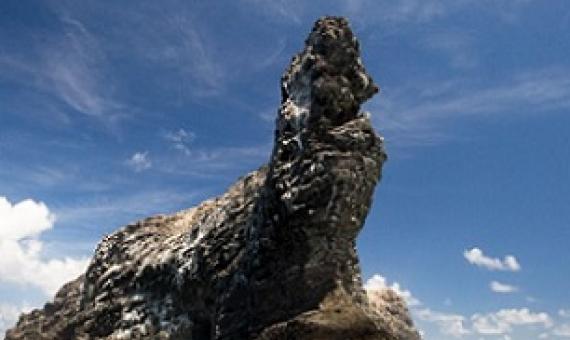Move over Spotify, marine experts across the world are working together to create a global platform containing the sounds of underwater life, to monitor the changing environment and inform marine conservation.
A framework for identifying the most vulnerable marine species will boost global conservation and policy efforts against anthropogenic climate change.
China, as the world’s largest producer and consumer of seafood, is well known for its voracious international fishing fleet.
The ocean surrounding the Northwestern Hawaiian Islands—already protected by the Papahanaumokuakea Marine National Monument—would find even greater safeguards under a proposal unveiled Friday by the National Oceanic and Atmospheric Administration.
Biophysically special, unique marine areas of Fiji.
Fiji is committed to, and is embarking upon, a process to significantly increase the number and coverage of Marine Protected Areas (MPAs) within the country. To help deliver on this commitment, the Marine Working Group of the Fiji national Protected Area Committee (PAC), established under the Environmental Management Act 2005, requested a review of previous efforts to describe marine priority sites for Fiji.
Biophysically special, unique marine areas of Tonga.
In 2015, the Tongan Cabinet embarked upon a National Marine Spatial Planning process, establishing a marine spatial planning technical working group comprising seven Ministries (the “Ocean 7”). One of their tasks was to identify Tonga’s special, unique marine areas. This report brings together data, literature and the outputs of a special workshop synthesising information about the areas identified. Data collected informed a scoring system by which the areas could be rated.
Pacific Coral Reef Action Plan 2021–2030
Many Pacific coral reefs are being damaged by habitat disturbance, pollution, fishing and climate change. Climate change is believed to be the greatest human-induced threat to corals in the Pacific region. The region needs an action plan to make cohesive decisions that will benefit coral reefs. This will enable leaders of Pacific Island countries, coral-reef managers and community members to coordinate their efforts to protect these valuable ecosystems.
The Pitcairn Island Council recently published a five-year plan providing a framework and long-term direction for managing activities, monitoring, compliance and enforcement of the Pitcairn Islands marine protected area (MPA).
Compared to all other institutions in the world, corporate enterprises have the most significant impact on the environment. According to the Carbon Majors Report published by the Carbon Disclosure Project in 2017, 100 companies are responsible for 71 per cent of global emissions.
“Do you need a plastic bag?” asks a store cashier. Bland as it may seem, that’s the kind of question that appears to be an effective nudge for tourists to take environmentally friendly action, according to a study.













